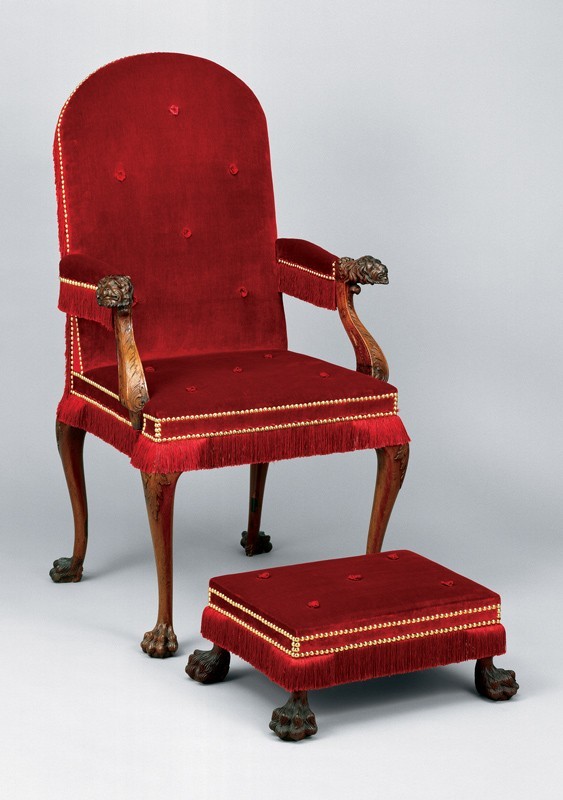
Ceremonial armchair, Britain, ca. 1750. Mahogany with beech. H. 49" (with modern arched board added to the crest), W. 21 1/2", D. 24 1/2" (seat). (Courtesy, Colonial Williamsburg Foundation, photo, Hans Lorenz.) The footstool is a reproduction.
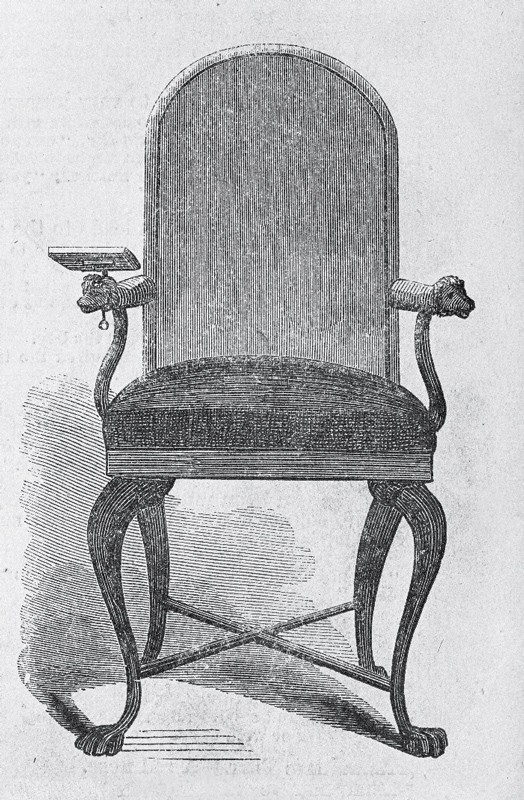
Engraved image of the armchair illustrated in fig. 1 published in Frank Leslie’s Illustrated Newspaper, June 16, 1866.
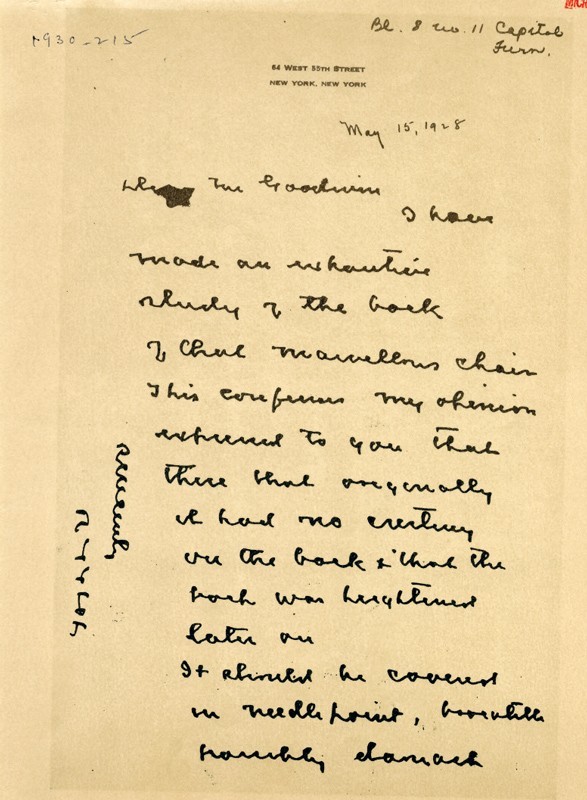
Letter from W. H. Soane to W.A.R. Goodwin, May 15, 1928.

Drawing of the armchair illustrated in fig. 1 marked "RECEIVED / FEB 11 1929 / PERRY, SHAW & HEPBURN."
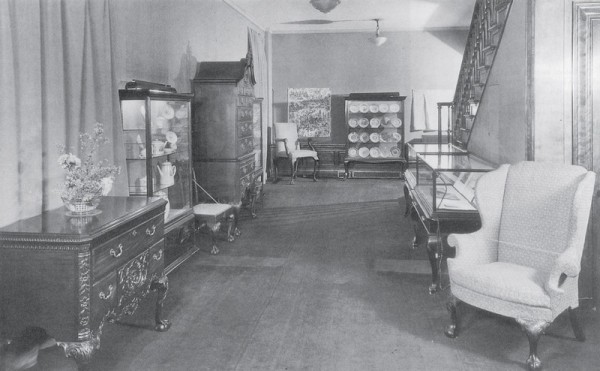
Photograph of a hall vignette in the “Girl Scouts Loan Exhibition,” New York, 1929. The armchair is visible in the left rear corner.
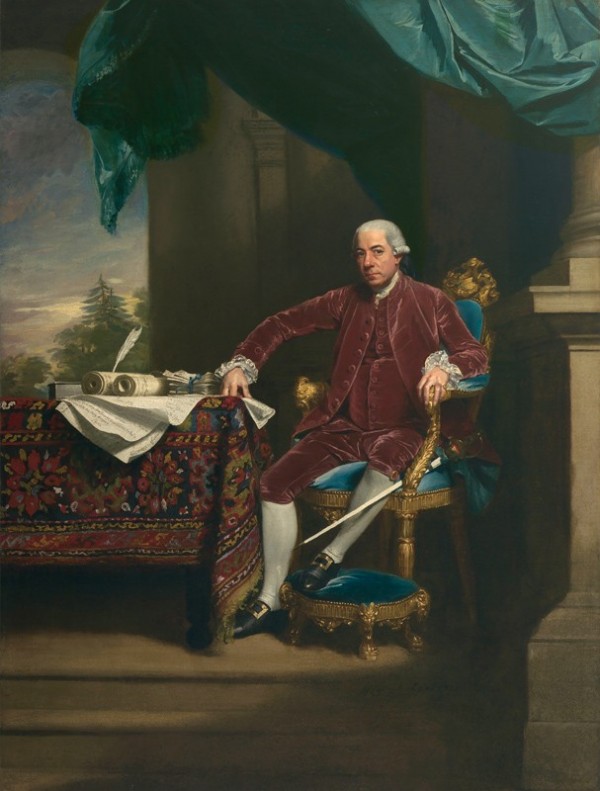
John Singleton Copley, Henry Laurens, 1782. Oil on canvas. 54 1/4" x 40 5/8". (Courtesy, National Portrait Gallery, Smithsonian Institution, Washington, D.C., gift of Andrew Mellon, 1942.)
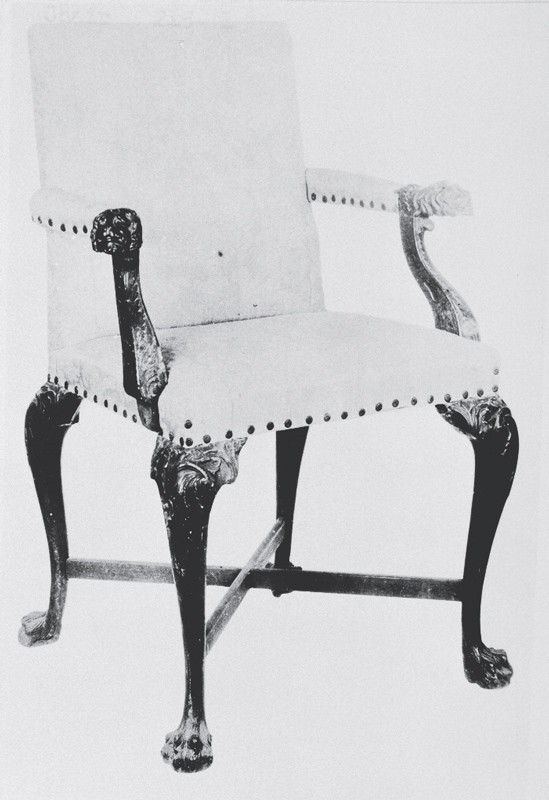
Photograph of the armchair illustrated in fig. 1, taken ca. 1930.

Photograph of the armchair illustrated in fig. 1, taken in 1963.
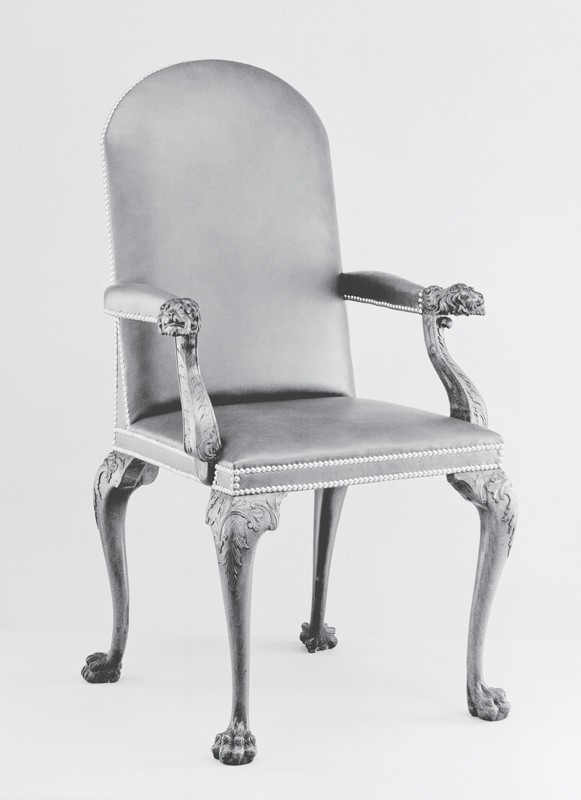
Photograph of the armchair illustrated in fig. 1, taken in 1977. The arched crest and new leather upholstery were added in preparation for the chair’s exhibition in “Furniture of Williamsburg and Eastern Virginia: The Product of Mind and Hand,” Virginia Museum, Richmond, 1978. Wallace Gusler curated that show.
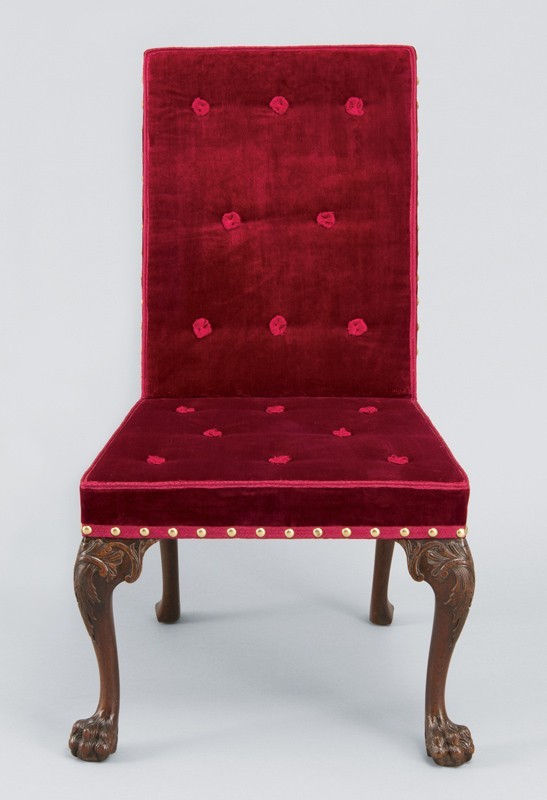
Backstool, Britain, ca. 1750. Mahogany with oak, cherry, beech, and ash. H. 40", W. 25", D. 22" (seat). (Courtesy, Colonial Williamsburg Foundation, Friends of Colonial Williamsburg Collections Fund and the TIF Foundation in Memory of Michelle A. Iverson; photo, Craig McDougal.) The other backstool has red pine in its construction.

Details showing the knee carving on the armchair illustrated in fig. 1 (left) and one of the backstools represented by the example illustrated in fig. 10 (right).
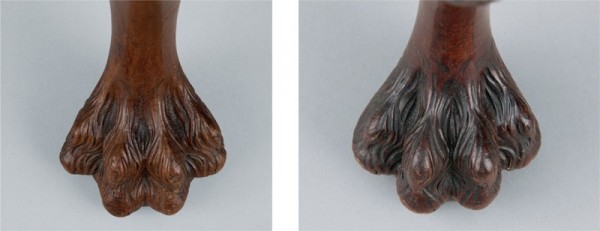
Details showing the paw feet on the armchair illustrated in fig. 1 (left) and one of the backstools represented by the example illustrated in fig. 10 (right).

Details showing the side knee blocks of the left front legs of the armchair illustrated in fig. 1 (left) and one of the backstools represented by the example illustrated in fig. 10 (right). On the armchair knee block, the carver snapped off the volute and had to modify his design.
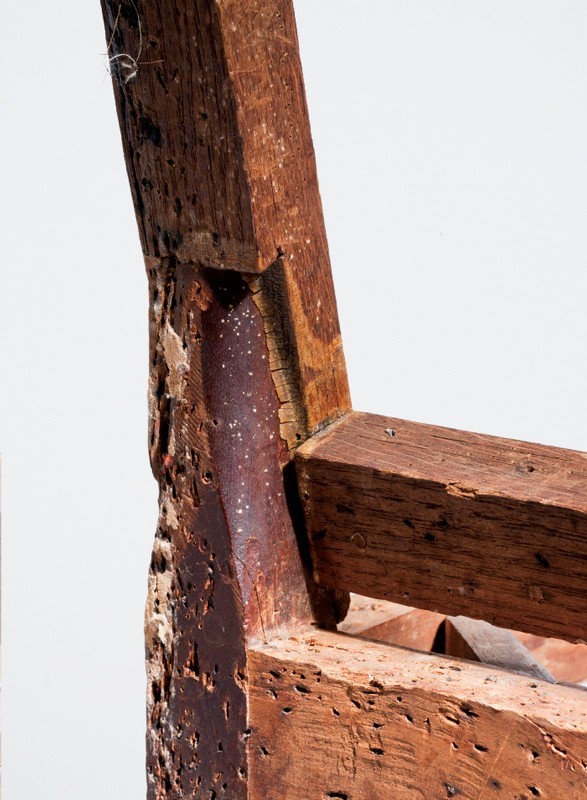
Detail showing a rounded rear post on one of the backstools, represented by the example illustrated in fig. 10.

Detail showing replaced front and side rails on the seat frame of one of the backstools, represented by the example illustrated in fig. 10.
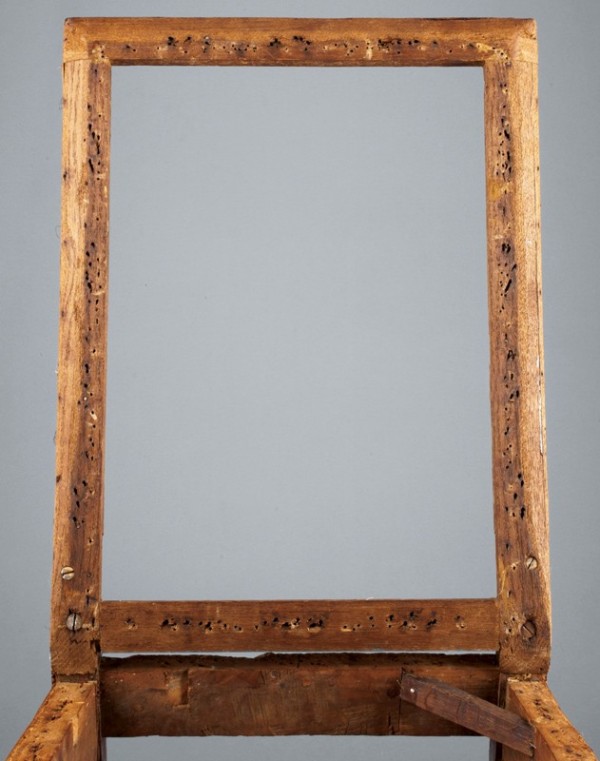
Detail showing the back attachment of one of the backstools, represented by the example illustrated in fig. 10.
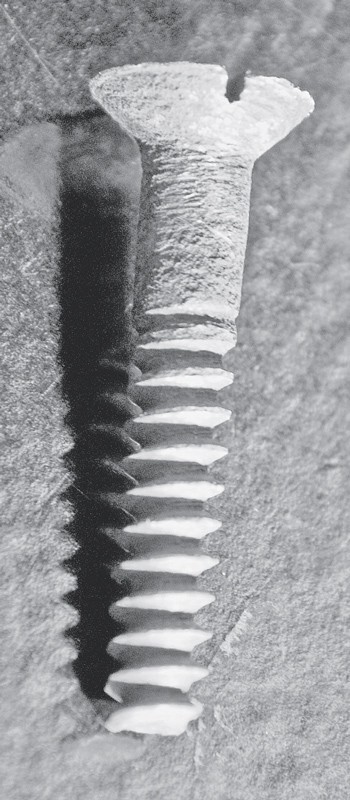
Detail of a screw used in the back attachment of one of the backstools, represented by the example illustrated in fig. 10.
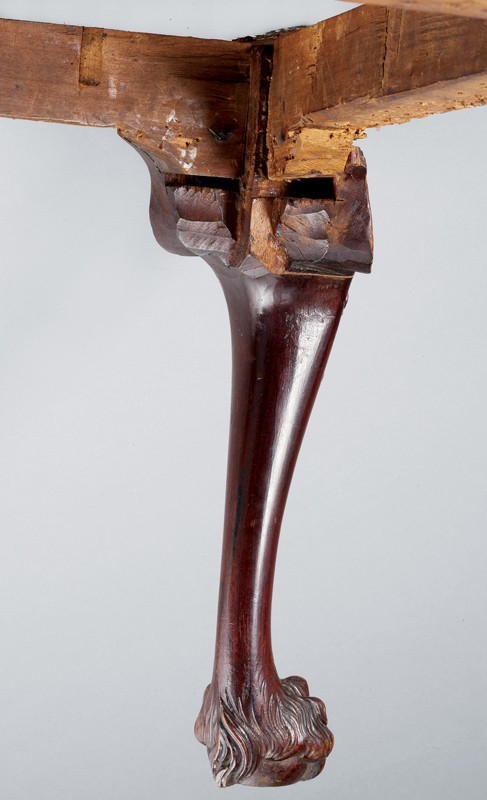
Detail showing altered knee blocks on one of the backstools, represented by the example illustrated in fig. 10.
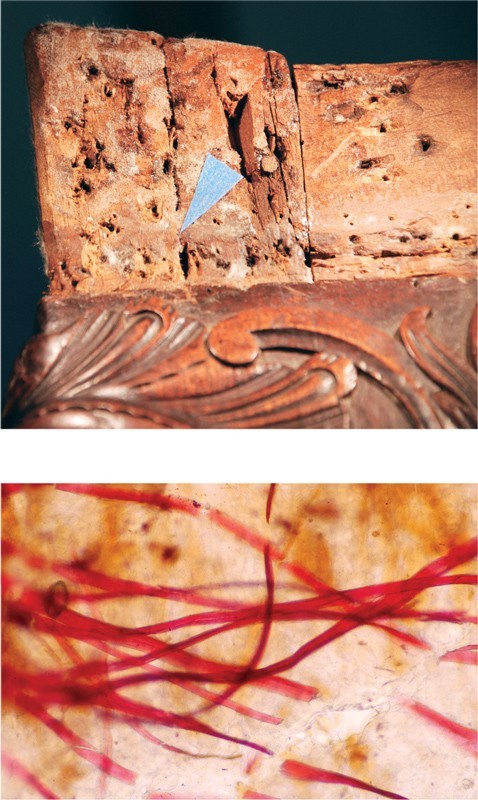
Details showing remnants of the original red wool (top) and silk (bottom) surviving on one of the backstools, represented by the example illustrated in fig. 10.
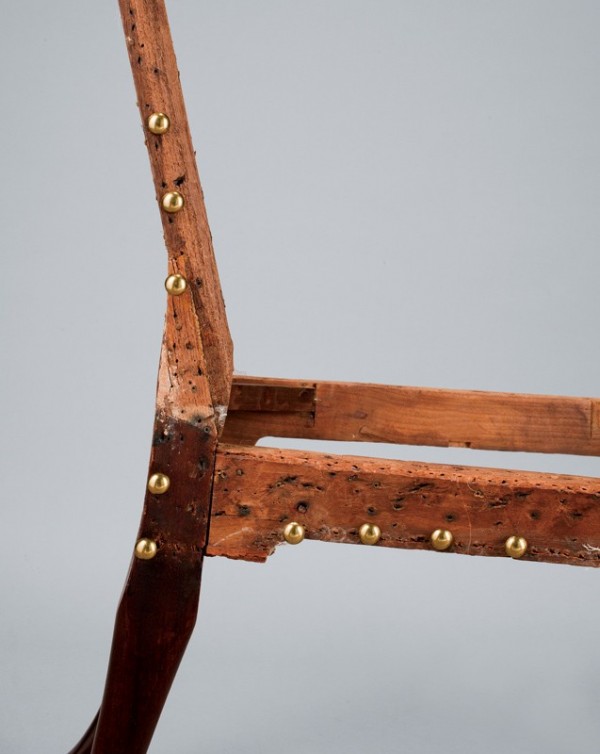
Detail showing the brass nail pattern on one of the backstools, represented by the example illustrated in fig. 10.
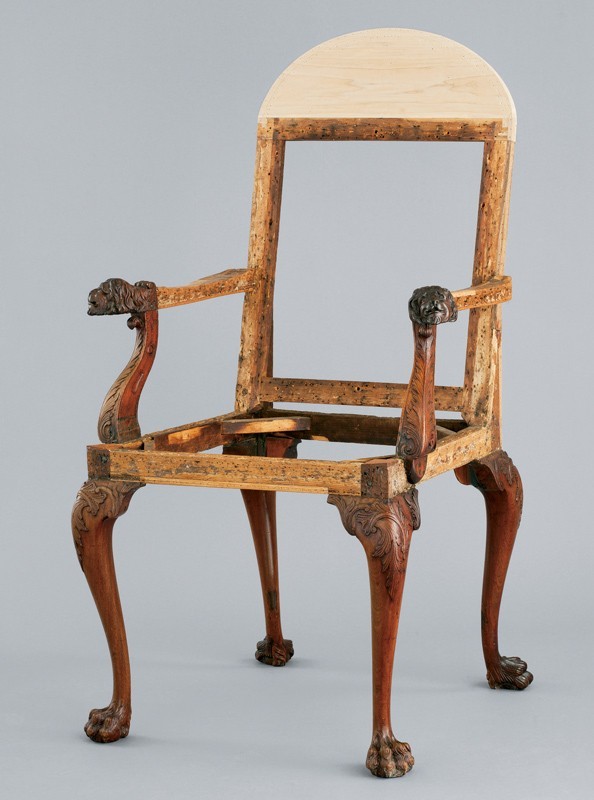
Armchair illustrated in fig. 1 with upholstery removed.
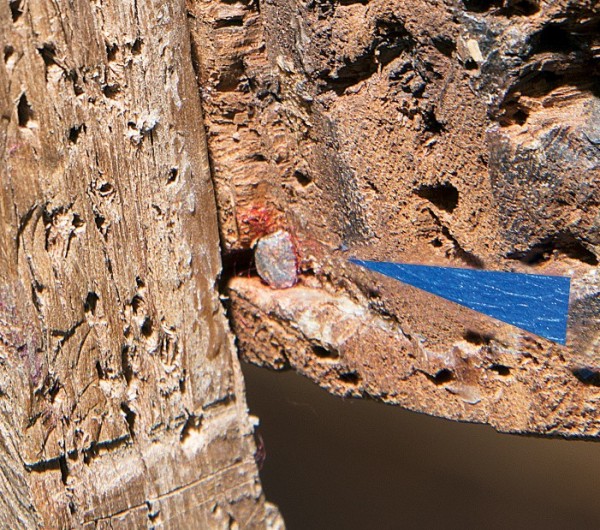
Detail showing a remnant of the original red silk show cloth on the armchair illustrated in fig. 1.
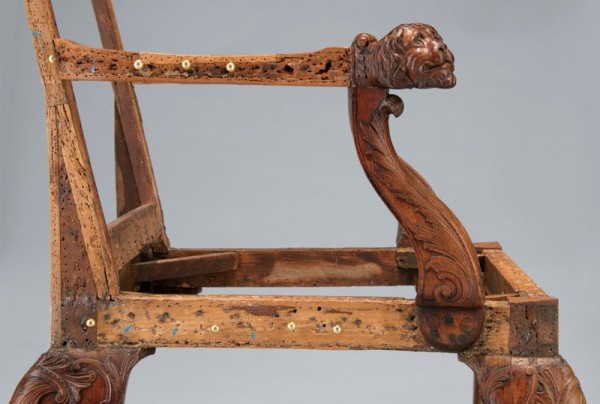
Detail showing the brass nail pattern on the armchair illustrated in fig. 1.
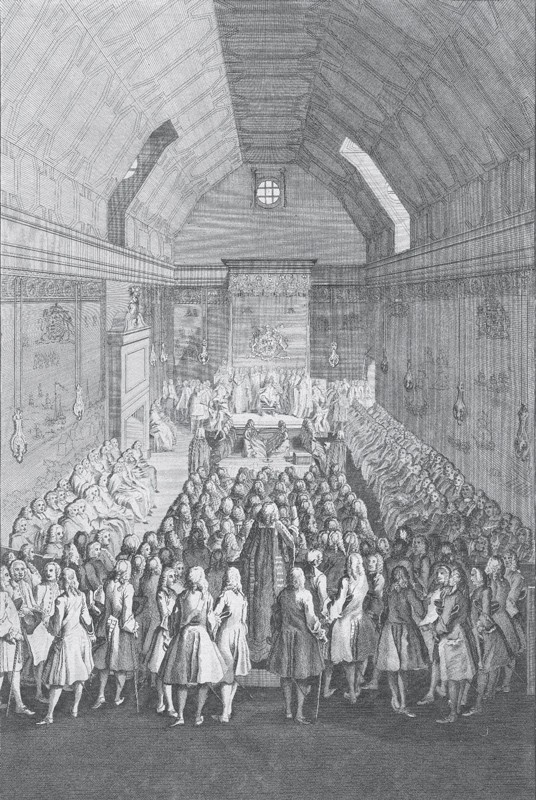
A View of the House of Peers. The King Sitting on the Throne, the Commons Attending Him at the End of the Session, 1755, engraved by B. Cole, London, 1755. (Courtesy, Colonial Williamsburg Foundation.)
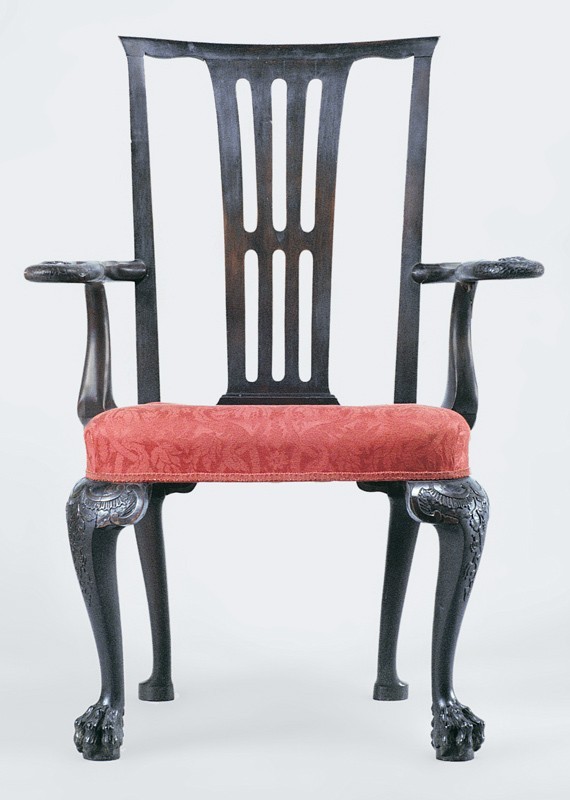
Ceremonial armchair with carving attributed to the shop of Henry Hardcastle (d. 1756), Charleston, South Carolina, 1755–1756. Mahogany with sweet gum. H. 53 3/8", W. 37 3/8" (arms). (Collection of the McKissick Museum, University of South Carolina; photo, Museum of Early Southern Decorative Arts.)

Detail of the mortises and screw holes in the crest of the armchair illustrated in fig. 25.
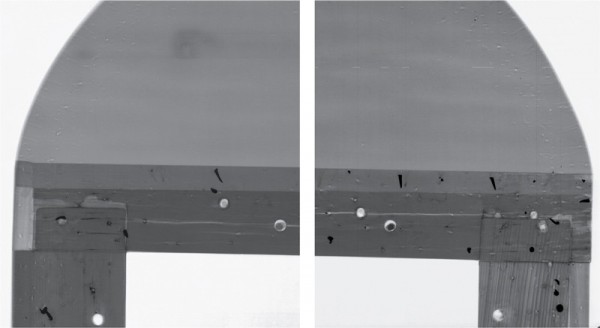
X-radiographs of the crest rail of the armchair illustrated in fig. 1.
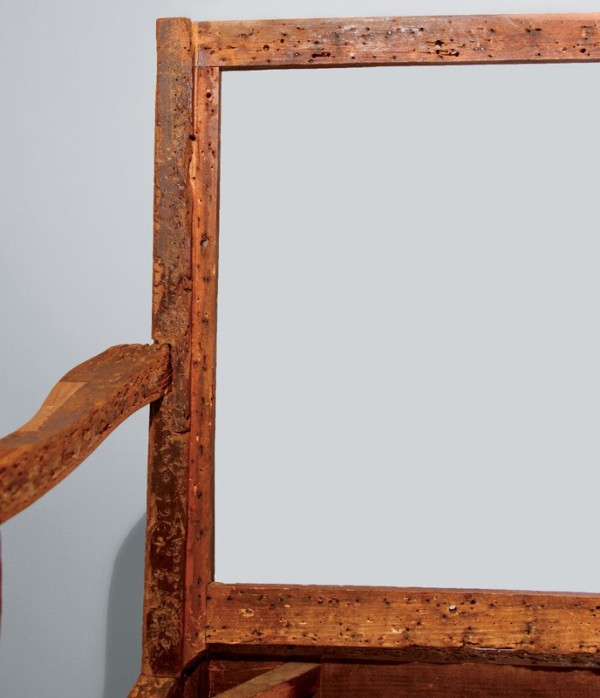
Detail showing the original placement of a mahogany strip added to the armchair illustrated in fig. 1 during the nineteenth century.
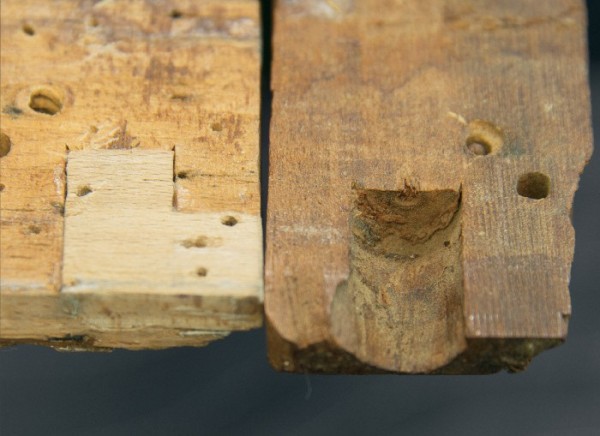
Detail showing the partial mortise in the top of the mahogany strip and alignment with a patched partial mortise in the crest rail of the armchair illustrated in fig. 1. The marks left by the lead and outer cutter of the center bit are visible at the bottom of the mortise on the strip and below the patch on the crest.

Detail showing a center bit similar to the example used to bore the mortises in the mahogany strip and crest rail of the armchair illustrated in fig. 1.
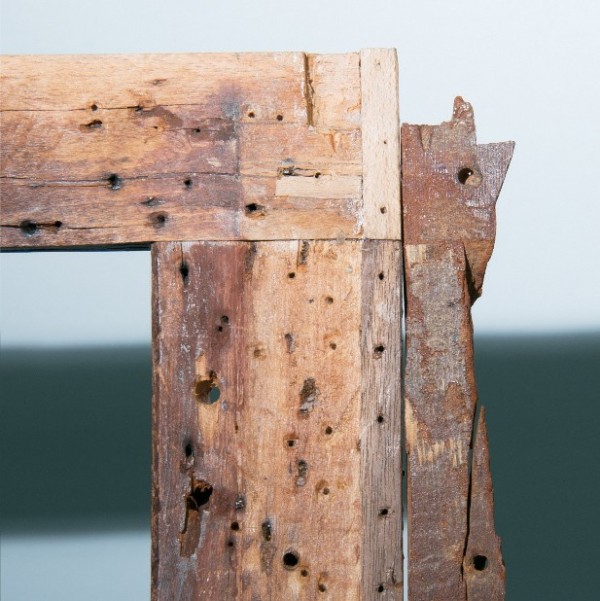
Detail showing the partial mortises on the mahogany strip and crest of the armchair illustrated in fig. 1 with a patch removed.

Detail showing the rabbeted upper rear edge of the crest of the armchair illustrated in fig. 1.
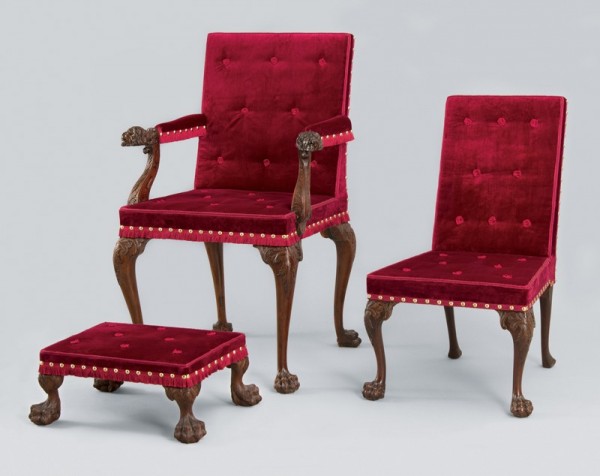
Armchair, backstool and reproduction stool illustrated in this article, with red silk, wool upholstery, and fringe. (Photo, Craig McDougal.)
